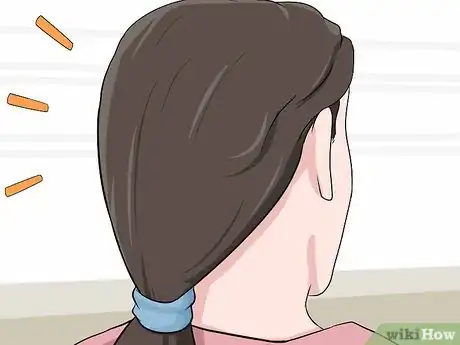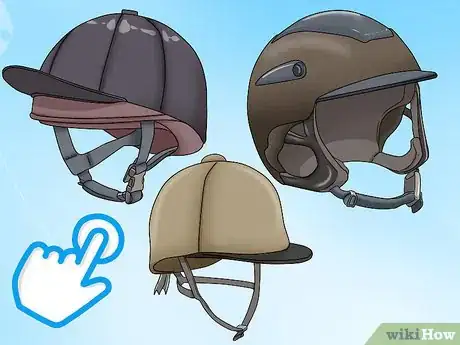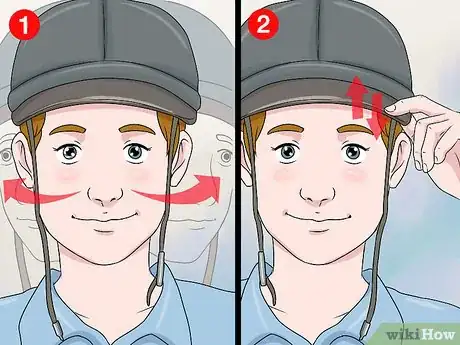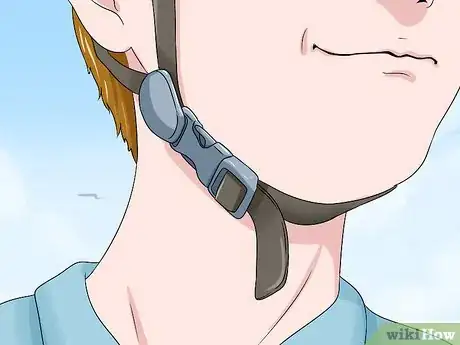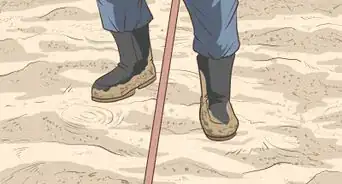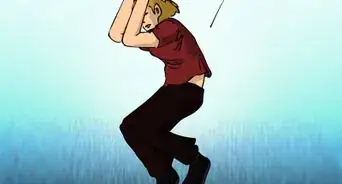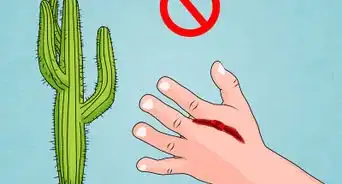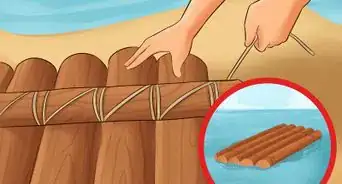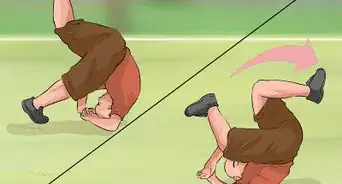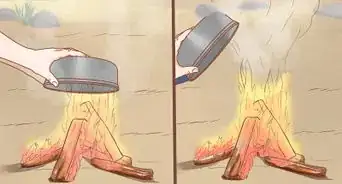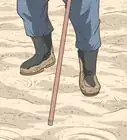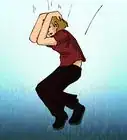This article was co-authored by wikiHow Staff. Our trained team of editors and researchers validate articles for accuracy and comprehensiveness. wikiHow's Content Management Team carefully monitors the work from our editorial staff to ensure that each article is backed by trusted research and meets our high quality standards.
This article has been viewed 52,012 times.
Learn more...
Whether you are a casual rider or a competitive equestrian, a well-fitted riding helmet is a must. You want a helmet that is made specifically for horseback riding, that fits snugly around your entire head, and that protects your forehead without blocking your vision. Knowing what to look for when you try on various styles will ensure your helmet is comfortable, as well as safe.
Steps
Preparing to Go Shopping
-
1Measure your head. Helmet sizes correspond to the circumference of your head measured at its widest point. To find your size, use a flexible measuring tape and wrap it around your head about 1 inch / 2.5 cm above your eyebrows. Make sure it stays flat to get an accurate measurement. Note the result in both inches and centimeters, and write it down to take to the store with you.[1]
- Helmet sizing isn't standardized, and your size may vary from manufacturer to manufacturer. If you are researching helmets online, you can check the sizing conversion charts on the manufacturer's website to make sure you are getting the right size.
- If you want to buy a helmet online, make sure you can return it if it doesn't fit. You can also try helmets on at a local tack shop to find the ones that fit well, and then look for those brands and styles online.
-
2Style your hair the way you do when riding. For the helmet to fit correctly, you’ll want to try it on over the same hair style you usually wear when riding. It is best to keep your hair flat under the helmet, so use low pony tails or buns rather than high ones.Advertisement
-
3Find a local tack or sporting goods store. You want a store that carries helmets made specifically for horseback riding. Helmets designed for other sports activities will not protect you adequately in a horseback riding fall.
- You’ll also want a store that provides helmets for different types of riding — pleasure or competitive, English and Western — as well as has a trained staff to help you find the perfect helmet.
- Even if you expect to buy a helmet online, it's a good idea to try some on first to figure out your correct size and which styles fit your head best.
- Research local stores by going online and reading their reviews. Check what people say about the quality and price of their helmets, as well as the knowledge of their staff. If you regularly ride at a local stable, the staff there will be able to recommend a good tack shop.
Getting the Best Fit
-
1Choose a helmet you like. Riding helmets come in a variety of shapes, styles and colors. Using your head measurement, choose a few in your size. You will need to try on each helmet to find the one that fits best.
- Everyone’s head is shaped differently, and helmet styles are all shaped differently. Even though you are trying on helmets in your size, some of them won’t fit. You might need to go up or down a size, depending on the style. And some helmets simply won’t ever fit your head correctly. In that case, just try another style.
-
2Open the fitting system. Some helmets have built-in pads and/or straps that can make the helmet tighter or looser simply by turning a dial. Before you put one of these helmets on, remove the pads or turn the dial to the largest setting. You can then add pads or tighten the netting if the rest of the helmet fits well.[2]
-
3Put the helmet on your head. It should fit all the way down, and cup your entire skull. The helmet should fit snugly, but not be uncomfortable. Be particularly aware of any excess pressure on ears and along your temples. It is unlikely the helmet will loosen, so if it is too tight now, it will always be too tight.[3]
-
4Make sure the helmet is level. The helmet should sit straight on your head, with the brim level and about 1 inch / 2.5 cm — or two fingers — above your eyebrows. If it sits higher than this, it is too small and won’t protect your head. Too low and it will block your eyes.[4]
- If your helmet has a fitting mechanism, you can try and adjust it if the fit is close but not quite right. Try a different style if the adjustments don’t make the fit better.
-
5Check the fit. Before you buckle the chin strap, give your head a vigorous shake like you are saying “no.” Then grab the brim and try to pull it up and down. In both cases, if the helmet slides around, it is too big.[5]
- The shape of the helmet will affect the fit. If the helmet is tight across your forehead but still rocks side to side when you shake your head, it's too round for your head. If it fits at the sides but slides front to back, it's too oval.[6]
-
6Buckle the chin strap. Adjust the chin strap so that it fits snugly but comfortably under your chin against your throat. You should be able to chew or yawn easily.
Warnings
- If possible, avoid buying a helmet online. Used helmets might be damaged. In addition, you will not be able to try it on to assure a safe fit before purchasing.⧼thumbs_response⧽
- If you fall and hit your head, even if the helmet doesn't break, it's a good idea to replace it.⧼thumbs_response⧽
- Wearing a helmet cannot guarantee complete protection from injury, but it will certainly lessen the impact.⧼thumbs_response⧽
References
- ↑ http://www.horsechannel.com/horse-exclusives/equestrian-helmet-fit.aspx
- ↑ http://www.horsechannel.com/horse-exclusives/equestrian-helmet-fit.aspx
- ↑ http://www.equisearch.com/discoverhorses/fit-your-riding-helmet-correctly
- ↑ http://www.equisearch.com/discoverhorses/fit-your-riding-helmet-correctly
- ↑ http://www.equisearch.com/discoverhorses/fit-your-riding-helmet-correctly
- ↑ http://www.equisearch.com/discoverhorses/fit-your-riding-helmet-correctly

